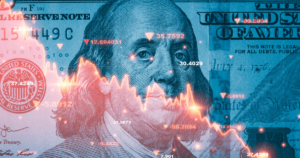When it comes to forex trading, carry trades are a popular strategy employed by experienced traders. In this blog post, we will explore the concept of carry trades, their definition, and how they can be utilized to maximize profits in the forex market. So, let’s dive in!
What is a Carry Trade?
A carry trade in forex trading refers to a strategy where traders borrow funds in a low-interest-rate currency to invest in a higher-interest-rate currency. The goal is to profit from the interest rate differential between the two currencies while also benefiting from potential exchange rate movements.
Carry trades are based on the concept that currencies with higher interest rates tend to appreciate over time compared to currencies with lower interest rates. Traders aim to take advantage of this interest rate differential to earn both interest income and potential capital gains.
The Mechanics of a Carry Trade
Let’s understand how a carry trade works in practice:
- Identifying High-Interest-Rate and Low-Interest-Rate Currencies: Traders first identify a currency pair where the base currency has a higher interest rate compared to the quote currency.
- Borrowing in the Low-Interest-Rate Currency: Traders borrow funds in the low-interest-rate currency through a margin account or by entering into a futures contract.
- Investing in the High-Interest-Rate Currency: The borrowed funds are then invested in the high-interest-rate currency.
- Earning Interest Income: Traders earn interest income on the invested funds, which is typically credited daily or monthly depending on the broker.
- Monitoring Exchange Rate Movements: Traders closely monitor exchange rate movements between the two currencies. If the high-interest-rate currency appreciates against the low-interest-rate currency, traders can potentially profit from both the interest rate differential and the capital gains.
Risks and Considerations
While carry trades can be lucrative, they also come with risks that traders should be aware of:
- Interest Rate Risk: Changes in interest rates can impact the profitability of carry trades. If the interest rate differential narrows or reverses, it can reduce the potential gains from the trade.
- Exchange Rate Risk: Exchange rate fluctuations can affect the profitability of carry trades. If the low-interest-rate currency appreciates against the high-interest-rate currency, it can erode potential gains or even lead to losses.
- Market Volatility: Carry trades can be sensitive to market volatility. Sudden changes in market sentiment or economic events can impact exchange rates and interest rate differentials.
Conclusion
In conclusion, carry trades offer an attractive opportunity for forex traders to capitalize on interest rate differentials and potential exchange rate movements. By carefully selecting currency pairs and managing the associated risks, traders can potentially earn interest income and achieve capital gains.
However, it’s important to note that carry trades require thorough analysis, monitoring, and risk management. Traders should stay informed about global economic trends, central bank policies, and market conditions to make informed trading decisions.
Remember, while carry trades can be profitable, they are not without risks. It’s essential to develop a well-rounded trading strategy and consult with a trusted financial advisor or broker to assess the suitability of carry trades for your individual investment goals and risk tolerance.








